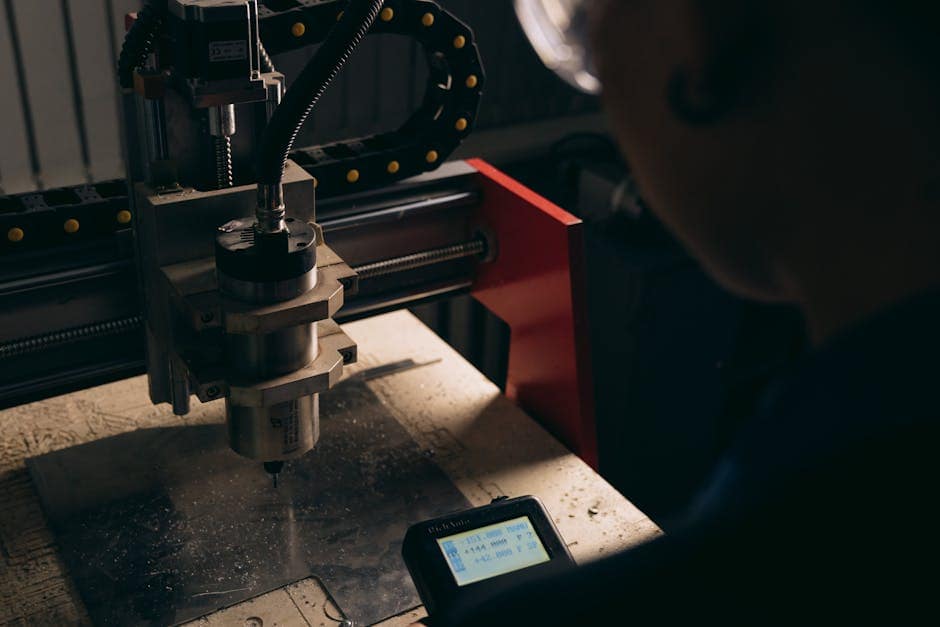Skill Test for CNC Operator
Modern manufacturing relies on precision and expertise. Therefore, CNC operators are critical to production success. A well-designed Skill Test for CNC Operator ensures only qualified individuals handle expensive machinery. This process verifies practical knowledge and technical proficiency. Additionally, it protects company assets and maintains quality standards. Furthermore, it reduces costly errors and material waste. This guide explores the implementation of effective skills assessments. It covers benefits, structures, and future trends. However, the core focus remains on building a reliable evaluation system.
Understanding Skill Test for CNC Operator
A CNC operator skills assessment is a multi-faceted evaluation. It measures both theoretical knowledge and hands-on ability. Typically, it includes written exams and practical machining tests. These evaluations cover blueprint reading and geometric dimensioning. Additionally, they test knowledge of tooling and materials. Consequently, employers gain a complete picture of candidate capabilities. This understanding is vital for hiring and promotion decisions.
Skill Test for CNC Operator Benefits
Implementing a standardized skills evaluation offers numerous advantages. First, it significantly improves hiring accuracy. Employers can confidently select candidates with proven abilities. Moreover, it dramatically reduces onboarding and training costs. Skilled operators require less supervision and make fewer mistakes. Therefore, overall production efficiency increases substantially. Additionally, a formalized testing process promotes workplace safety. Operators who understand protocols prevent accidents and injuries.
How Skill Test for CNC Operator Works
A comprehensive operator proficiency test follows a structured format. Generally, it begins with a written component. This section assesses knowledge of G-code and M-code. It also includes questions about machine maintenance. Next, candidates proceed to the practical segment. Here, they must set up a machine and produce a part. Their work is measured against strict quality standards. Finally, a verbal interview may assess problem-solving skills. This multi-stage approach ensures a thorough evaluation.
Best Skill Test for CNC Operator Practices
Developing an effective machining skills test requires careful planning. First, align test content with actual job requirements. Include tasks operators perform daily. For example, incorporate fixture setup and tool offsetting. Additionally, use real-world materials and blueprints. This approach increases test validity and relevance. Moreover, ensure testing conditions mirror the production environment. Consistency in evaluation criteria is also crucial. Therefore, use detailed scoring rubrics for all assessors.
Skill Test for CNC Operator Implementation
Successful integration of an operator assessment program needs strategy. Begin by involving experienced machinists in test design. Their practical insight is invaluable for creating relevant tasks. Next, pilot the test with current employees. This helps identify any flaws or ambiguities. Furthermore, establish clear pass/fail criteria based on performance data. Communicate these standards transparently to all candidates. Finally, schedule regular test reviews and updates. Technology and techniques evolve constantly.
Advanced Skill Test for CNC Operator Strategies
Beyond basic testing, advanced strategies enhance evaluation depth. Incorporate simulation software for complex scenarios. This allows safe assessment of troubleshooting skills. Additionally, include multi-axis machining tasks for experienced candidates. These challenges differentiate competent operators from experts. Moreover, consider adding metallurgy questions for material-specific roles. Alternatively, include precision measurement tool proficiency tests. These advanced elements create a more comprehensive skills picture.
Skill Test for CNC Operator Success Tips
Candidates can improve their performance on CNC evaluations. First, thoroughly review basic machining principles and mathematics. Practice reading complex blueprints and technical drawings. Additionally, familiarize yourself with different controller interfaces. G-code proficiency is absolutely essential. Furthermore, demonstrate safe work practices throughout the test. Cleanliness and organization also influence assessor impressions. Finally, manage time effectively during practical sections. Prioritize accuracy over speed initially.
Future of Skill Test for CNC Operator
CNC operator testing continues to evolve with industry trends. Increasingly, assessments incorporate additive manufacturing knowledge. Additionally, knowledge of IoT and data analytics is becoming valuable. Furthermore, virtual reality simulations may replace physical tests. This reduces material costs and increases accessibility. However, the core purpose remains unchanged. Employers must verify practical skills and theoretical knowledge. Therefore, assessment methods will continue advancing. Staying current with technology is crucial for both testers and candidates.
Frequently Asked Questions
What is typically included in a CNC operator skill test?
A standard skills assessment includes blueprint reading, measurement, machine setup, and actual machining. It evaluates both knowledge and hands-on ability.
How long does a typical CNC operator test take?
Comprehensive evaluations usually take 2-4 hours. This allows thorough assessment of both theoretical knowledge and practical machining skills.
Can experienced operators fail skill assessments?
Yes. Inconsistent practices or specialization in one machine type can cause failures. Standardized tests measure broad competency across essential skills.
How often should current operators be tested?
Annual or bi-annual testing is recommended. This ensures skills remain sharp and identifies training needs for new technologies or techniques.
What are the consequences of not testing operators?
Without testing, companies risk decreased quality, increased scrap, and more machine crashes. It also compromises workplace safety and overall productivity.
How can I prepare for a CNC operator test?
Study machining fundamentals, practice blueprint reading, and review G-code. Familiarize yourself with precision measurement tools and machine safety protocols.
Conclusion
A robust Skill Test for CNC Operator is indispensable in modern manufacturing. It ensures operational excellence and product quality. Additionally, it promotes safety and reduces costs. Implementing a structured assessment program requires careful planning. However, the long-term benefits far outweigh the initial investment. Companies must prioritize skilled workforce development. Therefore, begin developing or refining your evaluation process today. For further guidance, explore our professional resources. Alternatively, request an schedule appointment for personalized consultation. Our team offers expert consultation on implementing effective skills testing programs.
For additional information on global standards, consult the International Labour Organization guidelines. The U.S. Department of Commerce trade information provides industry insights. Furthermore, review UAE government employment regulations for regional compliance. Always adhere to World Health Organization workplace standards for safety. Finally, the World Bank economic reports offer valuable manufacturing sector analysis.




